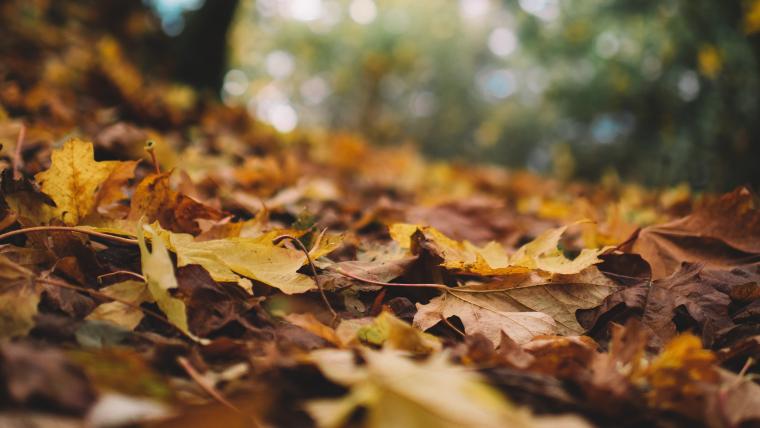
In a nutshell
When leaves, needles and flowers fall from trees, they’ve reached the end of their lives, but their role in building healthy soil is just beginning. There’s still a lot we don’t know about how much material falls from trees, in what season, and how these patterns vary by climate and forest type. Fiona Jevon and collaborators recently dug into these questions, using several datasets, including Nature’s Notebook. They found that deciduous trees, like oaks and maples, produce much more litter in warmer and wetter years, while conifers, like pines and spruces, respond more to the prior year’s conditions. Specifically, warmer falls and wetter winters in the prior year lead conifers to make more litter.
Across the year, about 70% of litter is from leaves or needles, with the remainder split evenly among twigs and reproductive material (flowers and fruits). Twigs, flowers and fruits don’t fall predominantly in the fall, as leaves do, thus providing important nutrients to the forest floor throughout the year. A better understanding of the patterns by which trees turn over into soil is key not only for forest health, but also as to understand carbon cycling in forests, which in turn helps calculate the large-scale contributions that forests make to removing carbon from the atmosphere.
What is special about this study?
Many studies have looked at leaf color change in the fall, as it marks the end of the growing season and matters for tourism. Another host of studies have looked at how litter decays and turns into soil. What this study brings into focus is the creation of litter – the patterns by which trees contribute to the rich layer of decomposing material that is the foundation of the forest. The study is made possible by the USA-NPN’s long-standing partnership with the National Ecological Observatory Network (NEON). At NEON sites across the country, phenology data is collected using the Nature’s Notebook protocols and later integrated in the USA-NPN database. As phenology data at NEON sites is co-located with data from litter fall traps, forest structure data and weather data, researchers were able to ask and answer this innovative set of questions.
What does this mean for YOU?
Your observations of fruit and leaf fall have more potential than you (or we!) may have realized. The study reminds us to look down and appreciate the soil. Deep, natural mulch is great for our parks, gardens and yards. It keeps the soil moist during drought and absorbs water during heavy rainfall events. Deep leaf litter also sequesters more carbon and makes more nitrogen available for plants. Take another look at the soil surface in your area – what makes it up? How does it vary seasonally?
Citation: Jevon, F.V., A. Polussa, A.K. Lang, J.W. Munger, S.A. Wood, W.R. Wieder, and M.A. Bradford. 2022. Patterns and controls of aboveground litter inputs to temperate forests. Biogeochemistry https://doi.org/10.1007/s10533-022-00988-8